Study on High-Strain-Rate Deformation of Magnesium Alloy Using Underwater Shock Waves Generated by High-Voltage Electric Discharge of Thin Wire
Abstract
:1. Introduction
2. Experimental Methods
2.1. Shock Wave Generator and Pressure Measurement Method
2.2. Materials and Numerical Simulation
2.3. Magnesium Alloy Forming Method
3. Results and Discussion
3.1. Pressure Measurement Results for the Underwater Shock Wave
3.2. Numerical Simulation Results
3.3. Magnesium Alloy Forming Experiment Results
4. Conclusions
- When a thin aluminum wire with a diameter of 0.5 mm, charging voltage of 1000 V, and charging energy of 5 kJ were used, a maximum pressure of approximately 52 MPa was obtained at a position 40 mm from the electrode.
- Numerical simulations showed that the maximum peak pressure was higher with a hyperbolic pressure vessel than with a parabolic pressure vessel.
- Because it is difficult to form magnesium alloy plates at room temperature, an auxiliary plate was added, which enabled forming without breakage.
Author Contributions
Funding
Conflicts of Interest
References
- Dziubińska, A.; Gontarz, A.; Dziubiński, M.; Barszcz, M. The forming of magnesium alloy forming for aircraft and automotive applications. Adv. Sci. Technol. 2016, 10, 158–168. [Google Scholar] [CrossRef]
- Kaczyński, P.; Gronostajski, Z.; Polak, S. Progressive crushing as a new mechanism of energy absorption. The crushing study of magnesium alloy crash-boxes. Int. J. Impact Eng. 2019, 124, 1–8. [Google Scholar] [CrossRef]
- Monteiro, W.A. The Influence of Alloy Element on Magnesium for Electronic Devices Applications. In Light Metal Alloys Applications; IntechOpen Limited: London, UK, 2014; pp. 229–241. [Google Scholar]
- Ueda, S. Engineering materials. Nikkan Kogyo Shinbun Sha 1998, 45, 118–121. [Google Scholar]
- Sano, T.; de Winter, A.; Saiki, T.; Horikoshi, S.; Fuchizawa, S.; Sado, S. Reduction of Environmental Impact Attained by Magnesium Alloys for Automotive Components. In Proceedings of the 6th International Conference on Technology of Pasticity (ICTP 1999), Nuremberg, Germany, 19–24 September 1999; pp. 589–594. [Google Scholar]
- Ogawa, N.; Shiomi, M.; Osakada, K. Forming limit of magnesium alloy at elevated temperatures for precision forging. Int. J. Mach. Tools Manuf. 2002, 42, 607–614. [Google Scholar] [CrossRef]
- Chino, Y.; Mabuchi, M. Plastic-forming processes for magnesium alloys. J. Jpn. Inst. Light Met. 2001, 51, 498–502. [Google Scholar] [CrossRef] [Green Version]
- Alaneme, K.K.; Okotete, E.A. Enhancing plastic deformability of Mg and its alloys-A review of traditional and nascent developments. J. Magnes. Alloy. 2017, 5, 460–475. [Google Scholar] [CrossRef]
- Nussbaum, G.; Sainfor, P.; Reggazzoni, G.; Gjestland, H. Scr. Strenthening mechanisms in the rapidly solidified AZ91 magnesium alloy. Scr. Metall. 1989, 23, 1079–1084. [Google Scholar] [CrossRef]
- Lahaie, D.; Embury, J.D.; Chadwich, M.M.; Gray, G.T. A note on the deformation of fine grained magnesium alloys. Scr. Metall. Et Mater. 1992, 27, 139–142. [Google Scholar] [CrossRef]
- Mabuchi, M.; Higashi, K. Strengthening mechanisms of Mg-Si alloys. Acta Mater. 1996, 44, 4611–4618. [Google Scholar] [CrossRef]
- Chaudry, U.M.; Hamad, K.; Kim, J.G. On the ductility of magnesium based materials: A mini review. J. Alloy. Compd. 2019, 792, 652–664. [Google Scholar] [CrossRef]
- Kubota, K.; Mabuchi, M.; Higashi, K. Review processing and mechanical properties of fine-grained magnesium alloys. J. Meterial Sci. 1999, 34, 2255–2262. [Google Scholar] [CrossRef]
- Hirofumi, I.; Masatoshi, N.; Shigeru, T. Explosive forming. In Explosion, Shock Wave and High-Strain-Rate Phenomena of Advanced Materials; Hokamoto, K., Ed.; Elsevier Science and Technology: Amsterdam, The Netherlands, 2021; pp. 17–33. [Google Scholar]
- Ghaderi, S.H.; Mori, A.; Hokamoto, K. Analysis of explosively welded aluminum–AZ31 magnesium alloy joints. Mater. Trans. 2008, 49, 1142–1147. [Google Scholar] [CrossRef] [Green Version]
- Inao, D.; Mori, A.; Tanaka, S.; Hokamoto, K. Explosive welding of thin aluminum plate onto magnesium alloy plate using a gelatin layer as a pressure-transmitting medium. Metals 2020, 10, 106. [Google Scholar] [CrossRef] [Green Version]
- Ghaderi, S.H.; Mori, A.; Hokamoto, K. Explosion joining of magnesium alloy AZ31 and aluminum. Mater. Sci. Forum 2007, 566, 291–296. [Google Scholar] [CrossRef]
- Manikandan, P.; Lee, J.N.; Mizumachi, K.; Ghaderi, S.H.; Mori, A.; Hokamoto, K. Transition joints of aluminum and magnesium alloy made by underwater explosive welding technique. Mater. Sci. Forum 2012, 706–709, 757–762. [Google Scholar] [CrossRef]
- Chen, P.; Feng, J.; Zhou, Q.; An, E.; Li, J.; Yuan, Y.; Ou, S. Investigation on the explosive welding of 1100 aluminum alloy and AZ31 magnesium alloy. J. Mater. Eng. Perform. 2016, 25, 2635–2641. [Google Scholar] [CrossRef]
- Zhang, T.; Wang, W.; Yan, Z.; Zhang, J. Interfacial morphology and bonding mechanism of explosive weld joints. Chin. J. Mech. Eng. 2021, 34, 8. [Google Scholar] [CrossRef]
- Rouzbeh, A.; Sedighi, M.; Hashemi, R. Comparison between explosive welding and roll-bonding processes of AA1050/Mg AZ31B bilayer composite sheets considering microstructure and mechanical properties. J. Mater. Eng. Perform. 2020, 29, 6322–6332. [Google Scholar] [CrossRef]
- Manikandan, P.; Lee, J.O.; Mizumachi, K.; Mori, A.; Raghukandan, K.; Hokamoto, K. Underwater explosive welding of thin tungsten foils and copper. J. Nucl. Mater. 2011, 418, 281–285. [Google Scholar] [CrossRef]
- Mori, A.; Tamaru, K.; Hokamoto, K.; Fujita, M. Underwater Explosive Welding, Discussion Based on Weldable Window. The American Institute of Physics Conf. Proc. 2006, 845, 1543. [Google Scholar]
- Tatukawa, I. Interfacial phenomena in explosive welding of Al-Mg alloy/steel and Al-Mg alloy/titanium/steel. Trans. Jpn. Weld. Soc. 1986, 17, 110–116. [Google Scholar]
- Yan, D.; Bian, D.; Zhao, J.; Niu, S. Study of the electrical characteristics, shock-wave pressure characteristics, and attenuation law based on pulse discharge in water. Shock Vib. 2016, 6412309. [Google Scholar] [CrossRef] [Green Version]
- Higa, O.; Yasuda, A.; Higa, Y.; Shimojima, K.; Hokamoto, K.; Itoh, S. Optical examination of shockwave propagation induced by an underwater wire explosion. Int. J. Multiphysics 2016, 10, 343–353. [Google Scholar]
- Shimojima, K.; Higa, Y.; Higa, O.; Takemoto, A.; Iyama, H.; Watanabe, T.; Kawai, H.; Hokamoto, K.; Itoh, S. Design and production of pressure vessel for food processing machine using underwater shock using measurement of particle velocity and results of numerical analysis. Int. J. Multiphysics 2019, 13, 283–293. [Google Scholar]
- Shimojima, K.; Higa, O.; Higa, K.; Itoh, S. Development of milling flour machine of rice powder using instantaneous high pressure 1st report, Development of continuous driving device and componential analysis of rice powder. Jpn. J. Food Eng. 2016, 16, 297–302. [Google Scholar] [CrossRef]
- Ide, M.; Shibuta, M.; Wada, N.; Tanaka, S.; Hamashima, H.; Itoh, S. The basic research for pulverization of rice using underwater shock wave by electric discharge. Int. J. Multiphysics 2011, 5, 115–129. [Google Scholar] [CrossRef]
- Heggemann, T.; Psyk, V.; Oesterwinter, A.; Linnemann, M.; Kräusel, V.; Homberg, W. Comparative analysis of electrohydraulic and electromagnetic sheet metal forming against the background of the application as an incremental processing technology. Metals 2022, 12, 660. [Google Scholar] [CrossRef]
- Avrillaud, G.; Mazars, G.; Cantergiani, E.; Beguet, F.; Cuq-Lelandais, J.P.; Deroy, J. Examples of how increased formability through high strain rates can be used in electro-hydraulic forming and electromagnetic forming industrial applications. J. Manuf. Mater. Processing 2021, 5, 96. [Google Scholar] [CrossRef]
- Woo, M.A.; Moon, Y.H.; Song, W.J.; Kang, B.S.; Kim, J. Acquisition of dynamic material properties in the electrohydraulic forming process using artificial neural network. Materials 2019, 12, 3544. [Google Scholar] [CrossRef] [Green Version]
- Woo, M.A.; Song, W.J.; Kang, B.S.; Kim, J. Acquisition and evaluation of theoretical forming limit diagram of Al 6061-T6 in electrohydraulic forming process. Metals 2019, 9, 401. [Google Scholar] [CrossRef] [Green Version]
- Drehmann, R.; Scheffler, C.; Winter, S.; Psyk, V.; Kräusel, V.; Lampke, T. Experimental and numerical investigations into magnetic pulse welding of aluminum alloy 6016 to hardened steel 22MnB5. J. Manuf. Mater. Processing 2021, 5, 66. [Google Scholar] [CrossRef]
- Zhang, S.; Kinsey, B.L. Influence of material properties on interfacial morphology during magnetic pulse welding of Al1100 to copper alloys and commercially pure titanium. J. Manuf. Mater. Processing 2021, 5, 64. [Google Scholar] [CrossRef]
- Li, Y.; Dezhi Yang, D.; Yang, W.; Wu, Z.; Liu, C. Mechanism of the shock wave generation and energy efficiency by underwater discharge. Materials 2022, 15, 5519. [Google Scholar] [CrossRef]
- Li, Y.; Dezhi Yang, D.; Yang, W.; Wu, Z.; Liu, C. Multiphysics numerical simulation of the transient forming mechanism of magnetic pulse welding. Metals 2022, 12, 1149. [Google Scholar] [CrossRef]
- The Japan Magensium Association. Available online: http://magnesium.or.jp/property/standard/ (accessed on 10 July 2022).
- Iyama, H.; Nishi, M.; Higa, Y. Influence of Pressure Vessel Shape on Explosive Forming. In Proceedings of the American Society of Mechanical Engineering (ASME) Pressure Vessel and Piping (PVP 2018), Prague, Czech Republic, 15–20 July 2018. CD-ROM. [Google Scholar]
- Itoh, S.; Nadamitsu, Y.; Kira, A.; Nagano, S.; Fujita, M.; Honda, T. Fundamental characteristics of underwater shock wave due to underwater explosion of high explosives. Trans. Jpn. Soc. Mech. Eng. Ser. 1996, 62, 3278–3283. [Google Scholar] [CrossRef]
- Hamashima, H.; Kato, Y.; Itoh, S. Determination of JWL parameters for Non-Ideal Explosive. The American Institute of Physics Conf. Proc. 2004, 706, 331–334. [Google Scholar]
- Aquelet, N.; Souli, M.; Olovsson, L. Euler-Lagrange coupling with damping effects: Application to slamming problems. Comput. Methods Appl. Mech. Eng. 2006, 195, 110–132. [Google Scholar] [CrossRef]

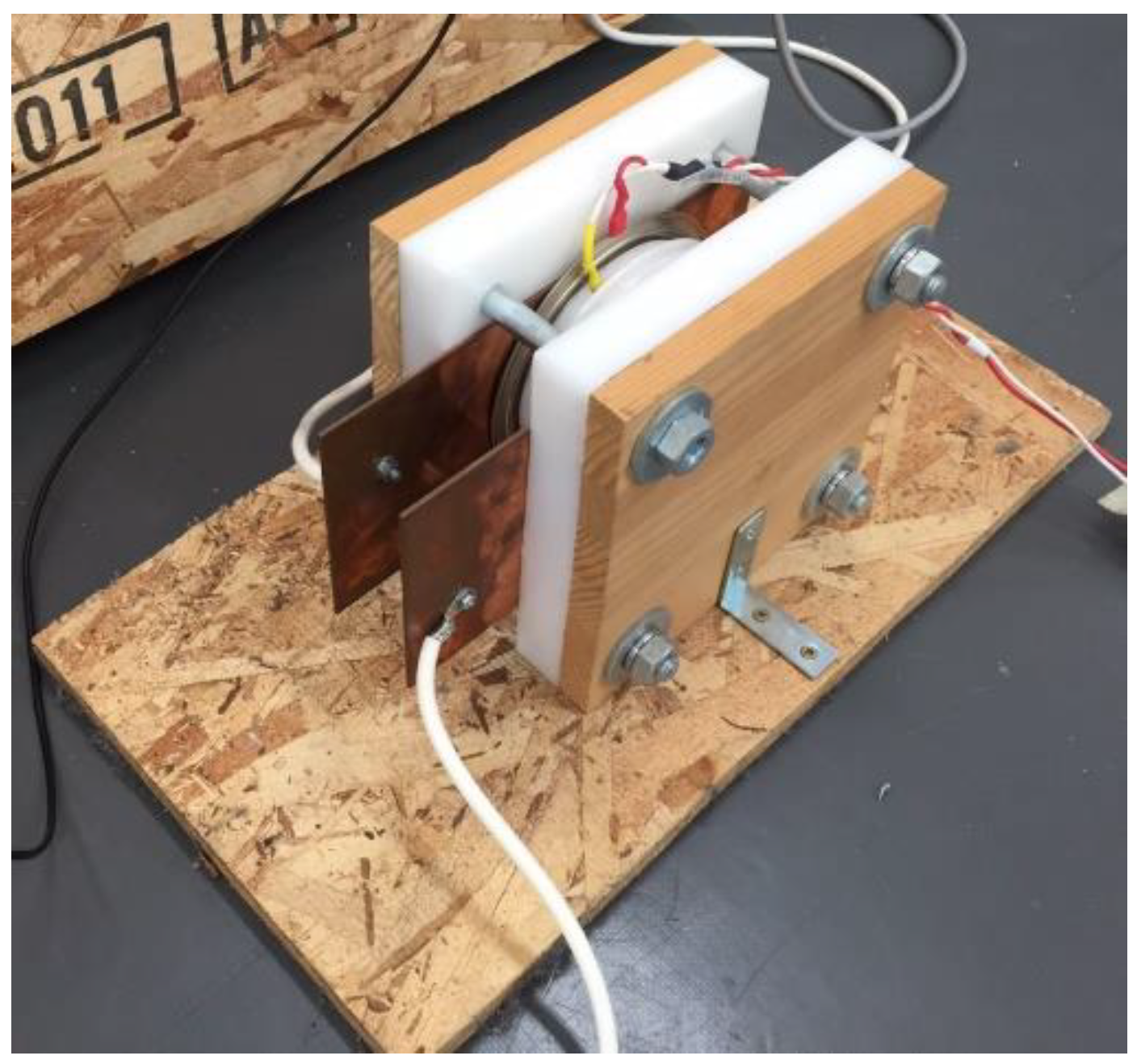
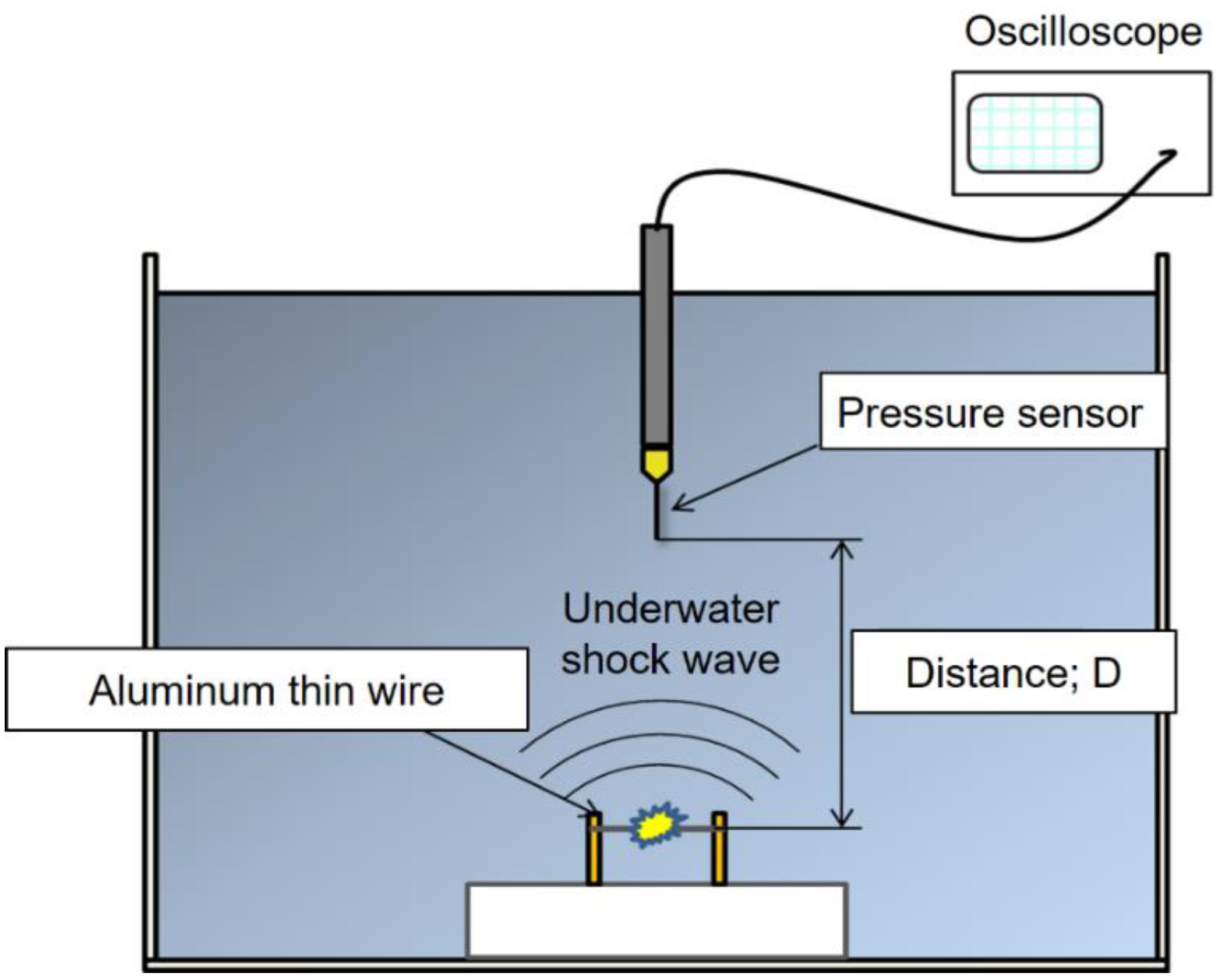

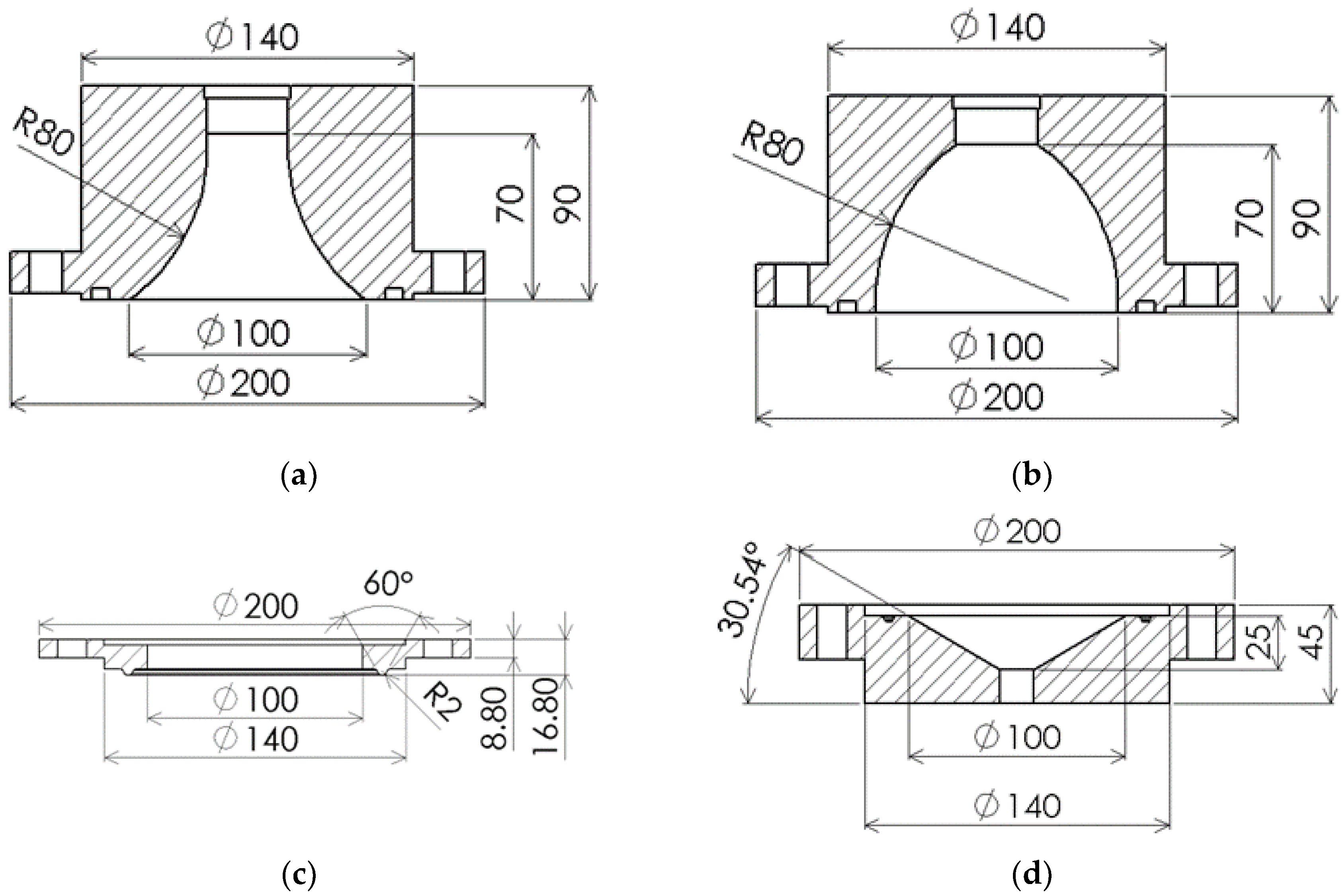

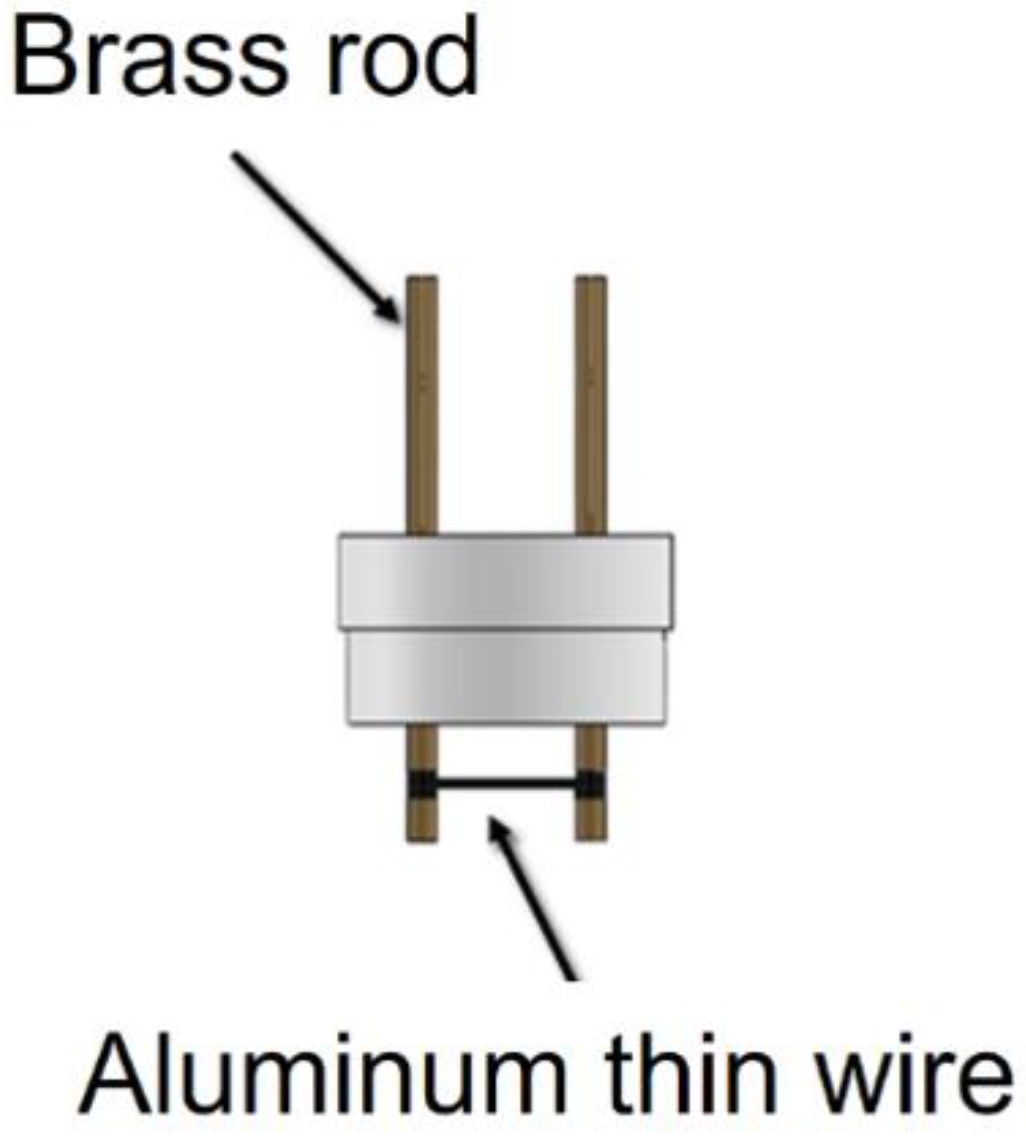




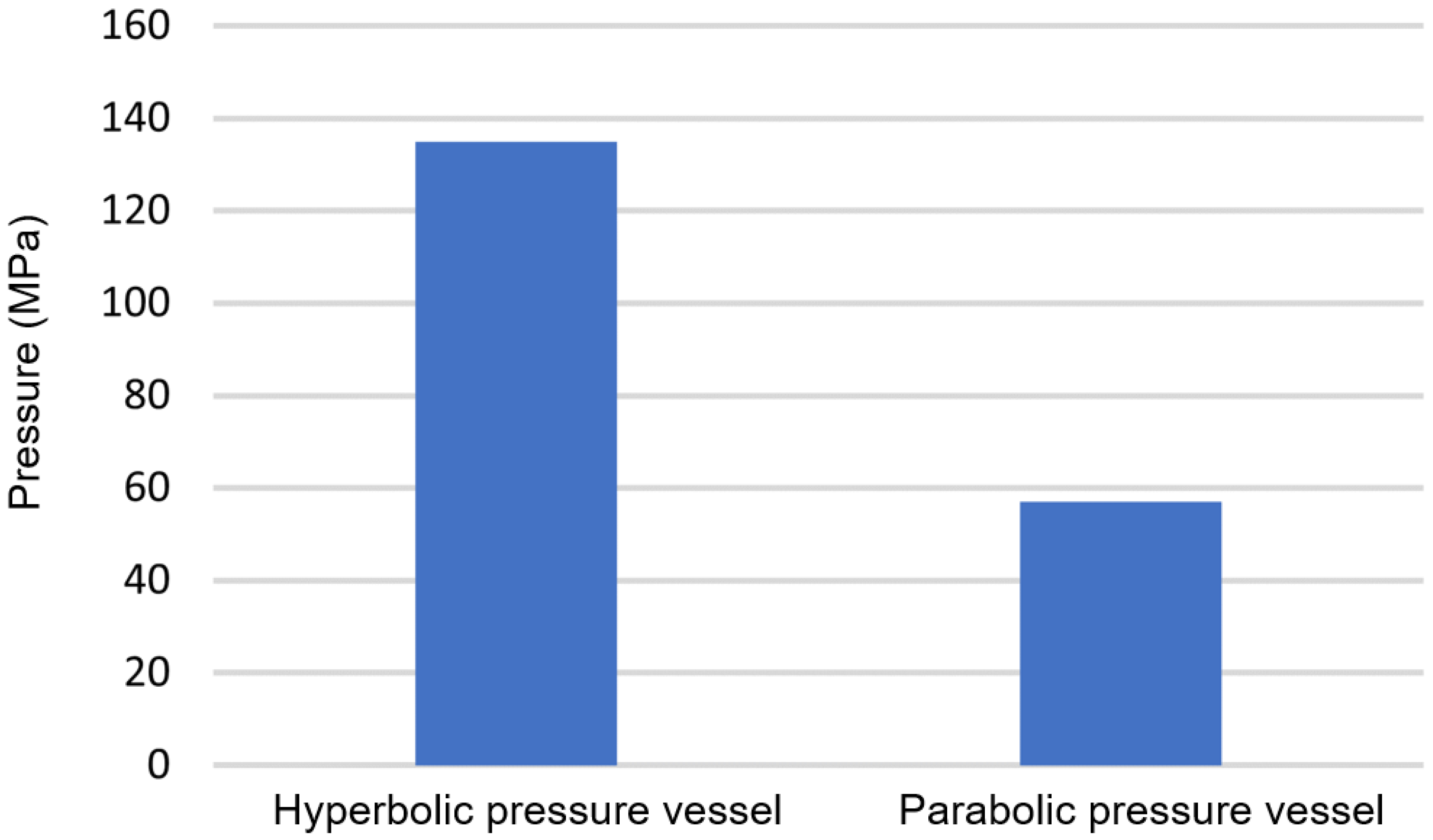

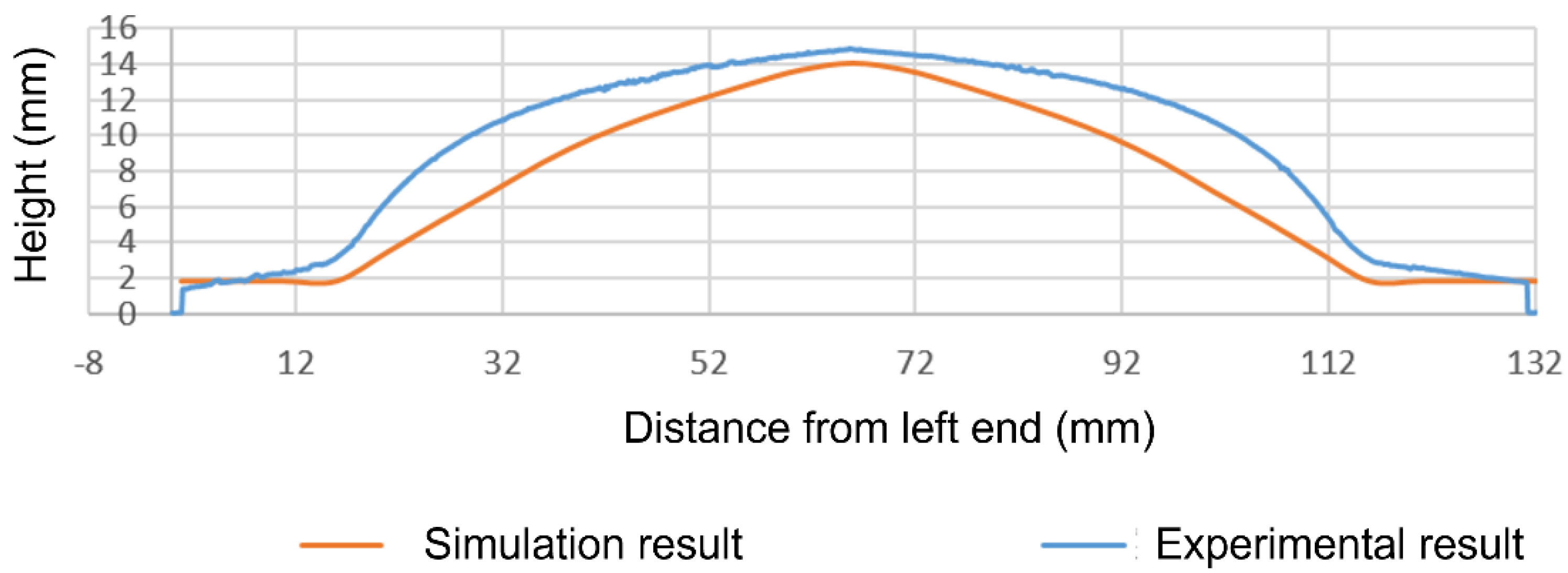
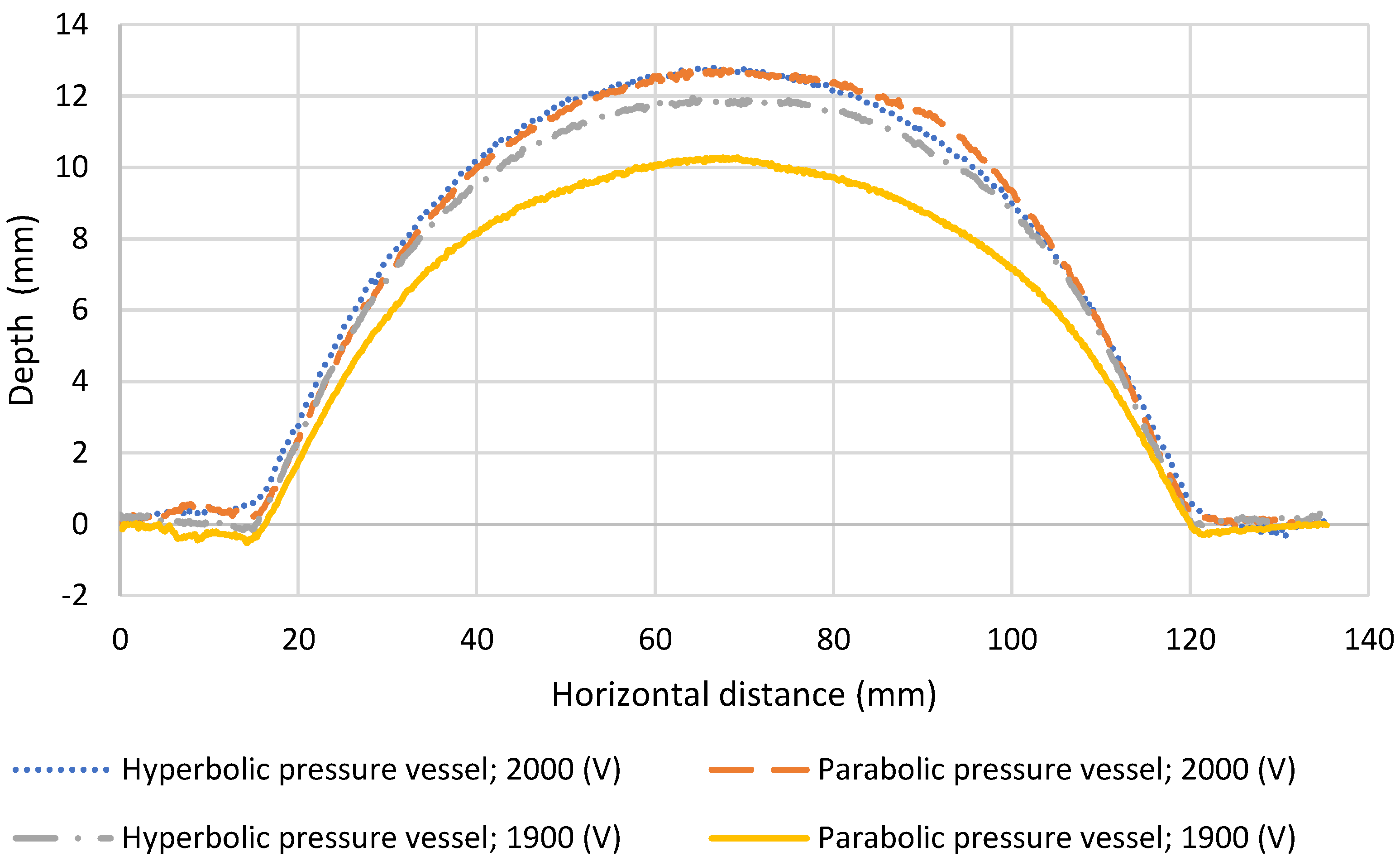


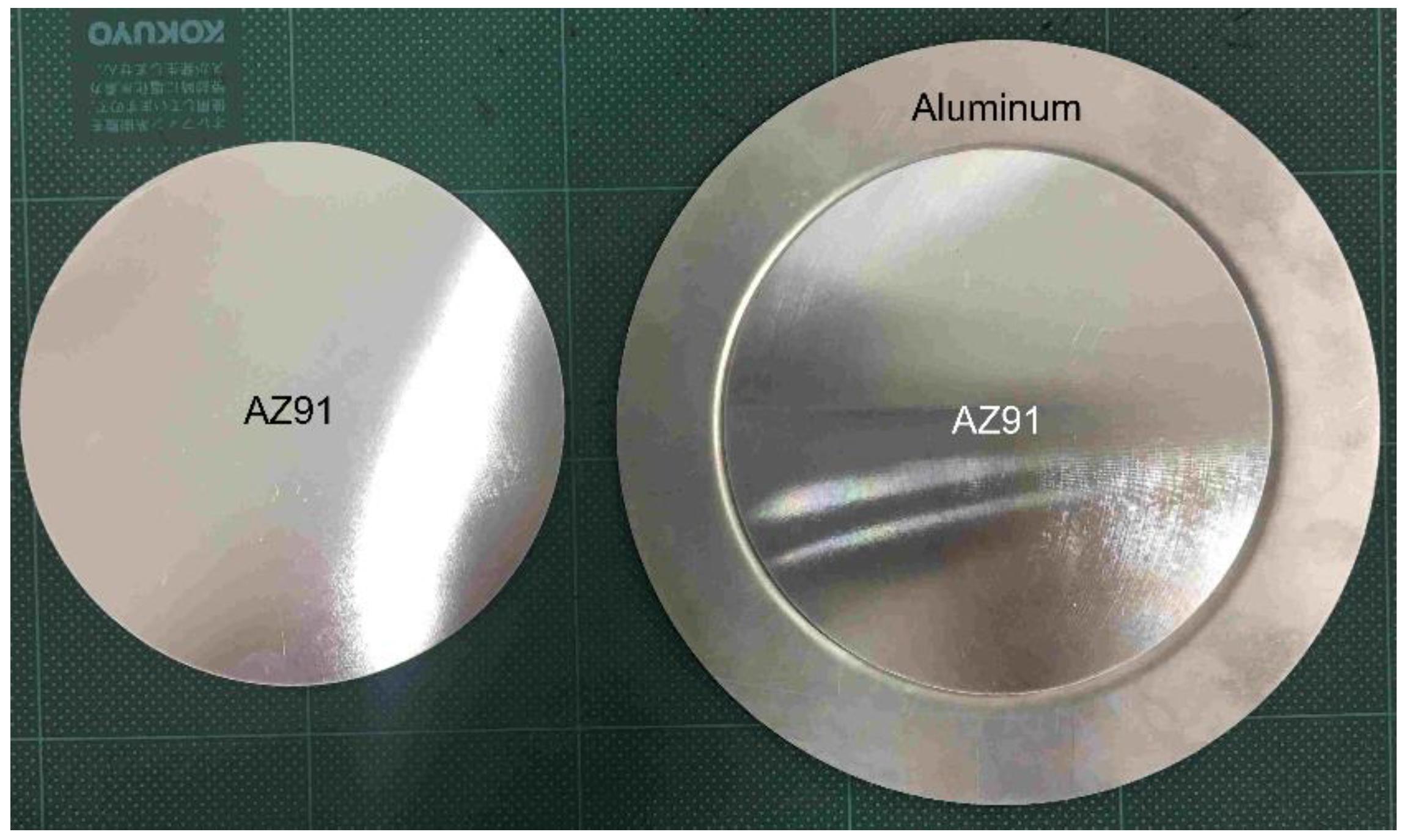
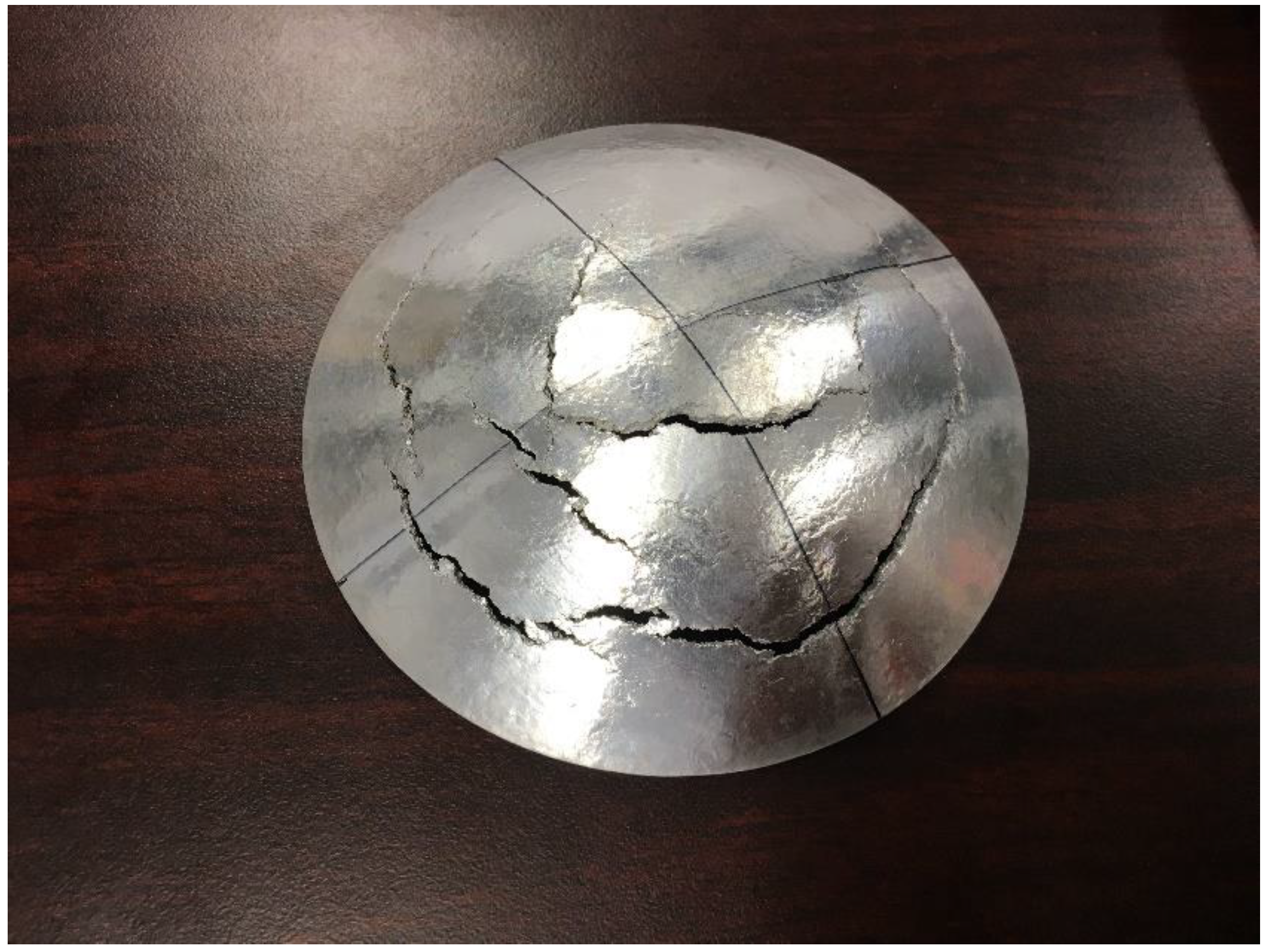
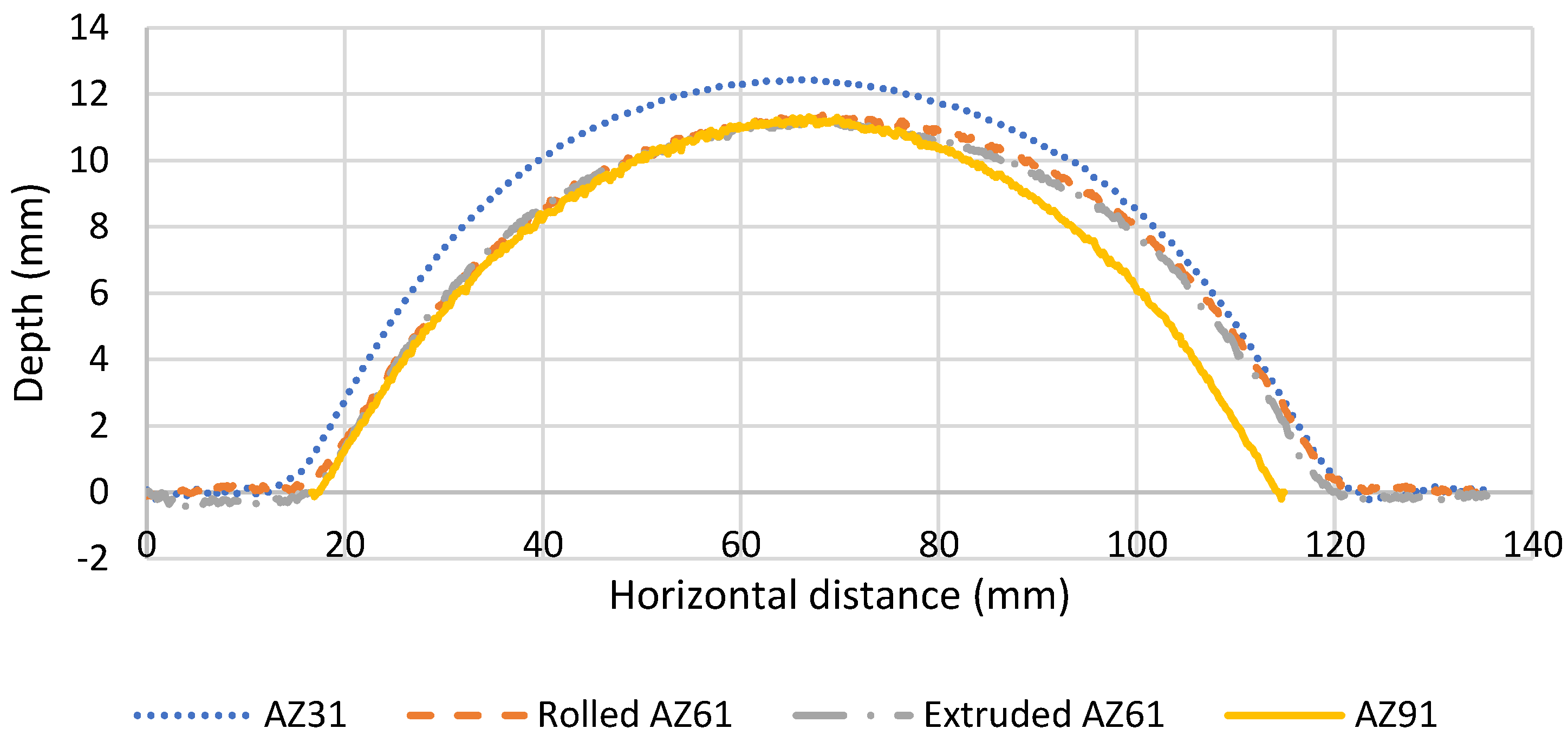
| Major Components Other than Magnesium (mass %) | Major Mechanical Properties | ||||
|---|---|---|---|---|---|
| Material | Aluminum | Zinc | Tensile strength (MPa) | 0.2% proof stress | Elongation (%) |
| AZ31 | 3 | 1 | 220–260 | 105–200 | 4–11 |
| AZ61 | 6 | 1 | 240–260 | 140–160 | 4–11 |
| AZ91 | 9 | 1 | 190 | 90 | 20 |
Publisher’s Note: MDPI stays neutral with regard to jurisdictional claims in published maps and institutional affiliations. |
© 2022 by the authors. Licensee MDPI, Basel, Switzerland. This article is an open access article distributed under the terms and conditions of the Creative Commons Attribution (CC BY) license (https://creativecommons.org/licenses/by/4.0/).
Share and Cite
Iyama, H.; Yamaguchi, H.; Nishi, M.; Higa, Y. Study on High-Strain-Rate Deformation of Magnesium Alloy Using Underwater Shock Waves Generated by High-Voltage Electric Discharge of Thin Wire. Metals 2022, 12, 1939. https://doi.org/10.3390/met12111939
Iyama H, Yamaguchi H, Nishi M, Higa Y. Study on High-Strain-Rate Deformation of Magnesium Alloy Using Underwater Shock Waves Generated by High-Voltage Electric Discharge of Thin Wire. Metals. 2022; 12(11):1939. https://doi.org/10.3390/met12111939
Chicago/Turabian StyleIyama, Hirofumi, Hayato Yamaguchi, Masatoshi Nishi, and Yoshikazu Higa. 2022. "Study on High-Strain-Rate Deformation of Magnesium Alloy Using Underwater Shock Waves Generated by High-Voltage Electric Discharge of Thin Wire" Metals 12, no. 11: 1939. https://doi.org/10.3390/met12111939





